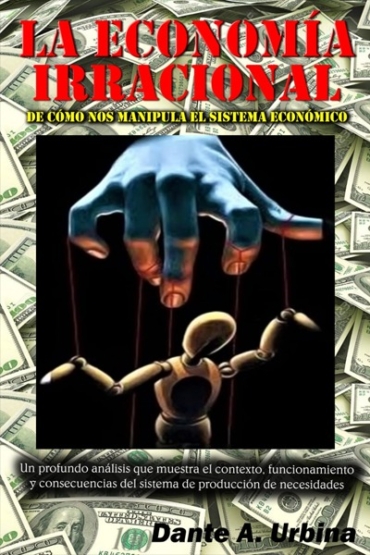As we have seen, the orthodox theory of distribution is based on the notion of “labor markets,” that is, places (not necessarily physical) in which entrepreneurs (demanders) and workers (offerers) come together to transact employment and wages in a free and competitive context. However, does it constitute a pertinent notion? It does not, and this opinion is very solidly supported by the Institutionalist School. Let us see its arguments.
In the first place, we have to consider the phenomenon of collective bargaining and labor unions. In this regard, it is interesting to note the context in which the institutionalist approach to labor market was originated. The institutionalist theory of labor markets emerged during the decade of the 40s in the United States, at a moment when unions were growing rapidly in that nation and centralized collective bargaining was spreading. This led some economists to consider that the orthodox theory of wages had ceased to be realistic and relevant. Why? Because the collective determination of wages in the presence of unions was very far from being competitive, since it is mainly a qualitative issue and not a merely quantitative one. This is particularly so given that unions are fundamentally political rather than economic institutions, which act in a context of “negotiating game” among government, employers and workers in accordance with a logic of negotiation rather than of optimization.
As a consequence of the foregoing, the wage is more an administered wage than a market wage. Indeed, given this context of collective bargaining, wages are determined by conscious human decisions and no longer by impersonal market forces. In this way, as institutionalist economists say, the wage does not conform to the supply and demand for labor, but rather the supply and demand for labor conform to the wage.
The second institutional critique of the orthodox theory of distribution is based on the famous dual labor market theory. According to this theory, originally proposed by Doeringer and Piore (1), there are two clearly differentiated types of labor markets: primary and secondary.
By definition, the primary labor markets are where “good jobs” are located. The characteristics are the following: 1) stability and security, 2) high and rising wages, 3) ongoing labor training and education, 4) promotion opportunities, 5) utilization of advanced and capital-intensive technologies, and 6) the existence of effective and efficient unions.
By contrast, the secondary labor markets are where “bad jobs” are located. The characteristics are the following: 1) instability (due to the high labor turnover), 2) low and relatively stagnant wages, 3) lack of labor training and education, 4) non-existent hierarchy of positions or one with few promotion opportunities, 5) utilization of outdated and labor-intensive technologies, and 6) the non-existence or precariousness of unions.
This is particularly problematic for orthodox economics because it contradicts the postulate which supposedly demonstrates the justice of capitalist distribution, namely, that each worker is paid according to his productivity. If there is duality in labor markets (or, at least, in a large part of them) wages will not be uniquely and primarily determined by the individual productivity of the workers but rather they will be determined by the type of labor market to which they belong (primary or secondary). Perhaps an orthodox economist can reply that, even accepting the existence of duality in the labor markets, it is not necessary to deny the mobility of the workers since it could be the case that workers of the secondary labor market increase their productivity and gain access to the primary market. Obviously, this case can occur and sometimes occurs. But it is the exception, not the rule; and even more so when the characteristics of the secondary labor markets are interlinked. Indeed, as a consequence of the low level of wages in this type of labor market, the businessmen have no great incentives to introduce labor-saving technologies and, consequently, the productivity of the workers stagnates along with their wages (not to mention the case where this type of technology is introduced but entrepreneurs do not pay higher salaries for the sake of obtaining higher profits). But not only that, the presence of a stagnant technology reduces the workers’ opportunities and incentives to improve their qualifications. Thus, it is not so simple for a worker under these conditions to be “promoted” to a primary labor market.
Finally, the third critique from institutionalism is related to the existence of the so-called internal labor markets. An internal labor market can be defined as an administrative system of an enterprise that is regulated by a set of intra-institutional rules and procedures to determine prices and allocations of labor. Thus, according to this approach, even if we accept the orthodox theory of wages determined by supply and demand, we would have to say that its validity ends at the door of the company, that is, precisely where this theory should enter. Why? Because inside the company the supposedly “universal” and “apodictic” laws of supply and demand are immediately replaced by a series of rules and procedures to determine the positions and salaries of employees. Any economist who has had the opportunity to know real businesses should have noticed that the existence of these internal labor markets is not a mere “bureaucratic anomaly” but rather a widespread phenomenon in business organization and administration. The main reason for this is that companies (especially the medium and large ones) need to reduce labor turnover. Firstly, because the costs of recruitment are usually very high (do not think only of the monetary costs) and, secondly, because when entrepreneurs invest in specific qualifications of their workers they are aware that it is necessary to stabilize the employment in order to obtain a better and sustained return for these investments in human capital.
Therefore, to speak of “free” and “competitive” labor markets in accordance with orthodox economics is nothing more than believing in a theoretical fiction that has nothing to do with reality and, in the final analysis, obscures our understanding in this regard. And this is well known by university professors of Economics who, on the one hand, in the classroom, talk about “free” and “competitive” labor markets and, on the other hand, are not daily concerned about being displaced from their jobs by another person equally capable and willing to work for a lower salary. Thus, in practice, not even they themselves believe what orthodox theory says…
You can have access to the full book here:
References:
1. Cf. Peter Doeringer and Michael Piore, Internal Labor Markets and Manpower Analysis, Ed. Health Lexington Books, Lexington, 1971.











